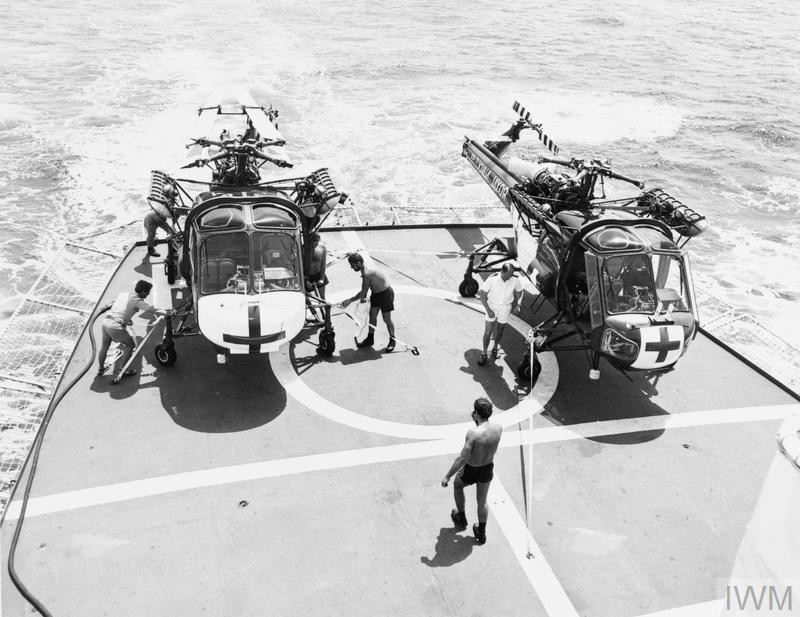The impending arrival of Argentine submarine ARA Santa Fe had set the cat amongst the pigeons, but the threat she posed would come back to haunt her over the weekend of 24-25 April 1982.
The slow process of transferring fuel from tanker RFA Brambleleaf to RFA Tidespring using damaged pumping equipment was completed on Saturday 24 April some 200 miles off the barren shores of South Georgia, allowing the former to sail for the UK via Ascension Island.
Sailing into the area was Type 22 frigate HMS Brilliant, detached from the Falkland Islands-bound Advanced Group, to provide extra air support in the shape of her two Lynx helicopters, which took the place of RFA Tidespring’s two Wessex 5 aircraft lost in crashes on the Fortuna Glacier two days previously.
As she drew closer to South Georgia, Brilliant rendezvoused with tanker RFA Tidespring to refuel.
The SAS observation post set up on Grass Island by the boat crews who disembarked from HMS Antrim the day before – and had managed to scale a cliff in freezing, windy conditions – could see no sign of Argentine activity at Stromness, and were airlifted from their position later in the day by Wasp helicopter from ice patrol ship HMS Endurance.
HMS Antrim’s flight was busy over the weekend, replacing the sonar on their Wessex Mk 3 Humphrey in order to help counter the anticipated threat of the Santa Fe.
Survey ships HMS Herald and HMS Hydra, both converted to serve as ambulance ships, sailed from Portsmouth to join the third ship of the trio, HMS Hecla, and hospital ship Uganda, which were closing in on the British-mandated Total Exclusion Zone around the Falklands..
Today’s image from the Imperial War Museum collection (© IWM FKD 46) shows two Westland Wasp helicopters on the flight deck of ambulance ship HMS Hydra; the aircraft on the left (Flight 011) is Hydra’s own while Flight 010 on the right is from HMS Herald.
* These posts can only give a brief sense of what was a complex and fast-moving situation 40 years ago, and cannot cover the involvement of every ship, squadron and unit in detail – for a much more comprehensive account see naval-history.net at https://www.naval-history.net/NAVAL1982FALKLANDS.htm
The Royal Naval Association is the biggest collective group of Royal Naval veterans and serving personnel, with more than 270 branches in the UK and overseas.
The RNA provides those with a link to the Royal Navy access to a life-long community of like-minded and supportive individuals.
Our community provides companionship, resilience, comradeship and unity to anyone and everyone with a Naval story, supporting them through life's highs and lows.
Membership is now free (please note, some branches may charge a small annual subscription, payable locally on their request) – see https://royal-naval-association.co.uk/join-us/ for details of how to join.
